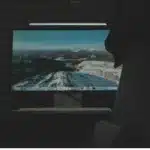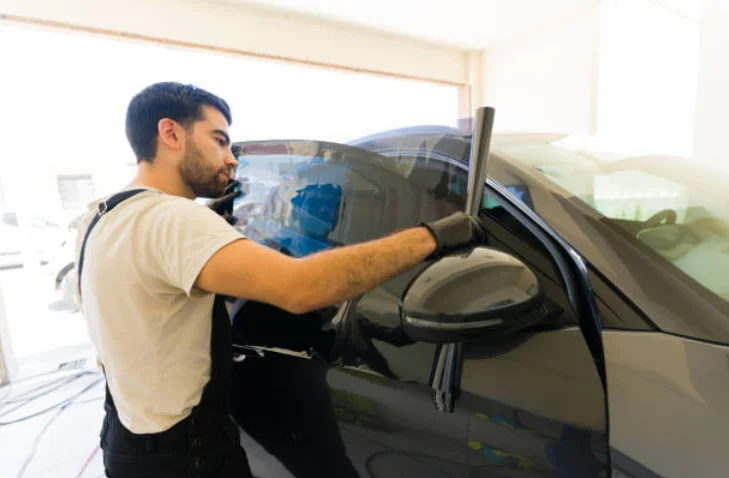
Fleets, sports rides, and everyday commuters now make the same trade-off that classic car hobbyists once did: gloss for grit. A new crop of specialists skips the wax and ceramic, slapping see-through headlight film onto lamps the way a boxer slips on hand wraps. The shift matters most in places where summers flirt with 120 degrees or winters dust the road with gravel and salt. Drivers there want illumination that stays bright, glass that stays clear, and a bill for replacement bulbs that never shows up. Detailers watch the up-sell potential keenly; most customers pay without a second thought once they hear UV exposure and stone chips are suddenly someone else’s problem.
Why Climate Zones Matter in Automotive Film Selection
Weather isn’t just background noise for car owners; it quietly chews on whatever surfaces are left unguarded. Sweltering noon sun, midnight frost, thick humidity, and the roadside cocktail of salt and grit keep headlights in a near-constant wrestling match. Over time that punishment can show up as
- lenses that drift from crystal clear to milky yellow
- spider-web micro-cracks from the glass over-heating and cooling too fast
- tiny pits carved by airborne sand and stray road debris
- stagnant moisture that sneaks inside and dulls LED brightness
Headlight protection film stands as a frontline defender, laying down a tough, sometimes self-healing shell the minute it is pressed onto the glass. Fleet owners and long-haul operators in unforgiving climates see that extra layer pushing replacement costs way down while letting vehicle lighting look brand-new.
B2B suppliers chasing repeat business soon learn that materials tested in real-world weather deliver customer loyalty, not just invoices. Window-tinting brands, quick to catch the trend, now roll fog-light and headlamp kits into their catalogs-specifically formulated to shrug off everything from desert grit to coastal salt spray.
Fleet managers, high-volume dealers, and mobile detailers have lately turned to headlight protection film for reasons that go well beyond good looks. A single replacement lamp on a fancy 2023 sedan-whether it uses laser light, adaptive LEDs, or a matrix-beam layout-can sticker at anywhere from five hundred to nearly fifteen hundred dollars, and that tab climbs quickly once labor is factored in.
A quality film acts like invisible armor by:
stopping the lens from yellowing under years of sunlight;
soaking up nicks from gravel, bug splatter, and everyday road debris;
keeping the OEM sparkle and brightness right where the engineers intended;
giving a used car an edge in the resale lot because the headlights still look fresh.
Window-tint manufacturers are catching on and now bundling headlight-grade films with their regular offerings in order to ride this trend. The upsell is straightforward: slap on the clear shield whenever a customer books a full ceramic wrap or a tint job, and watch the gross margin bump in real time.
Headlight Protection Film and Its Compatibility with Tint Services
Most tint or PPF shops already wield the heat guns and squeegees needed to lay down a headlight film, so the skill transfer is almost automatic. That comfort lets them upsell the service without a major learning curve. Plenty of successful B2B pros will quote the two applications side by side, turning a single visit into a one-stop protective makeover for the car owner.
For outfit owners, it feels cleaner to buy every roll from one distributor, including the dedicated headlight material. A uniform supply chain cuts down on shelf clutter and lets the crew train to repeat the same install pattern with minimal guesswork. Many curtain-window film makers quietly extend their brand promise into the lamp market, matching adhesive release, optical clarity, and UV blocking so the end customer won’t spot the difference.
That kind of brand cohesion matters when a fleet manager is signing off on a dozen identical trucks; mismatched lenses can scream cut-corner. Shops appreciate that lamp film peels off at the next service without leaving a ghost imprint on the glass, making it a no-brainer for leased rides or rigs on a mileage clock. Replace it, charge a small fee, and the fleet still looks fresh for another quarter.
What B2B Buyers Should Hunt for in Headlight Film
Buying headlight film for a new product line is not just a photo-op; it is a bottom-line call. Keep an eye on these essentials if you want clients who come back, not just once but again.
- UV Resistance: Look for a promise that better than 99 percent of ultraviolet light will bounce off. If the film can’t block that much, lenses will still end up dingy.
- Self-Healing Properties: Tiny scratches from road grit or a careless hose will only sting if the film doesn’t warm back into shape. Ask the brand how long it takes to disappear in straight sunlight or beside a hot engine block.
- Optical Clarity: Once the sheet is laid down, it should fade to nothing in the beam. Any ripple or haze dulls the cut-off line.
- Stretch and Conformability: Today’s headlights curve, twist, and even bulge under glass. If a film won’t fold into those dips, it might as well stay in the box.
- Adhesive Strength: A smart, pressure-sensitive adhesive sticks on contact yet peels without glue ribbons. Anything weaker or too aggressive becomes a warranty conversation.
The top window-tinting houses make these numbers front and center, often with graphs from 240-degree bake tests and blast lamps. If the claim isn’t in writing, treat it the same way you treat a speed limit-sign; look twice.
Capitalizing on the Trend: Tips for B2B Growth
Savvy detailing shops and fleet upfitters are noticing that a simple clear plastic overlay for headlights can boost profit without complicated new inventory. The film is small, but the upside is catching attention.
Bundle the job with existing services- slap the film on the headlights while finishing a full paint-protection or tint run. Customers see the convenience, you see ticket sizes creep upward.
Target your messaging to weather-battered markets. Road salt, summer blinding sun, and gravel-strewn winters all chew through lenses, and a quick flyer calling the product a shield makes the answer obvious.
Proof wins sales. Post a side-by-side image of a scuffed lens next to a filmed one, toss in a short customer quote, and the value discussion gets done in seconds.
Nail down a channel partner early. Distributors who specialize in window film often bundle training, volume pricing, and even logo decals, and tapping that resource saves a rookie shop days of legwork.
These straightforward moves do more than meet a surge in demand; they quietly set a business apart in a crowded lot full of similar offers.
Conclusion: A Small Upgrade with Significant Value
Motorists and fleet managers are growing tired of premature lens fogging and expensive headlight replacements, so expectation for durability keeps edging upward. A strip of polyurethane across the glass does not look dramatic, yet it answers that expectation in one easy step.
In harsh climates, the film practically pays for itself the first time a stone chip bounces harmlessly away. When light output stays true and the lens stays clear, safety, savings, and appearance all win, making the upgrade feel less optional and more obvious.
Fleet managers, leasing companies, and glass suppliers who pay attention to the latest trend usually lock in partnerships with a handful of window tint brands, toss headlight film into the mix for bundled quotes, and zero in on zones where chips and cracks pop up most often. The payoff looks like a protection-first playbook that fits the sharper, safety-first picture fleet and commercial clients will be asking for in 2025.

Best Tips and Tricks for Bitcoin Investments

Top Benefits of Hiring Professional Pet Sitting Services for Your Pets

Expert Insights on Improving Productivity and Efficiency

Accelerating drug discovery through the DEL-ML-CS approach

AI in Marketing Is No Longer a Buzzword — It’s the Strategy
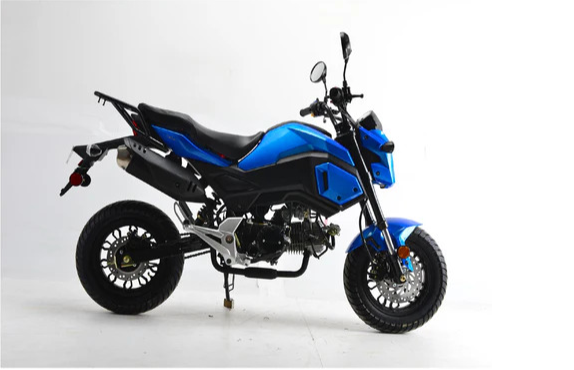
Affordable Fun: The Rise of Knock Off Honda Groms in the Mini Bike Scene
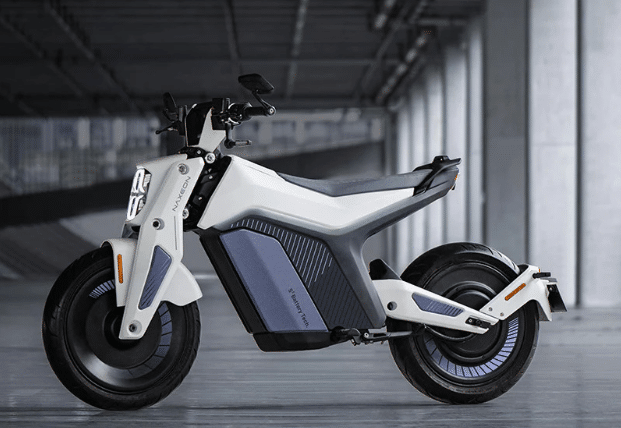
Ride Smart on a Budget: The Cheapest Street Legal Motorcycles That Deliver Value
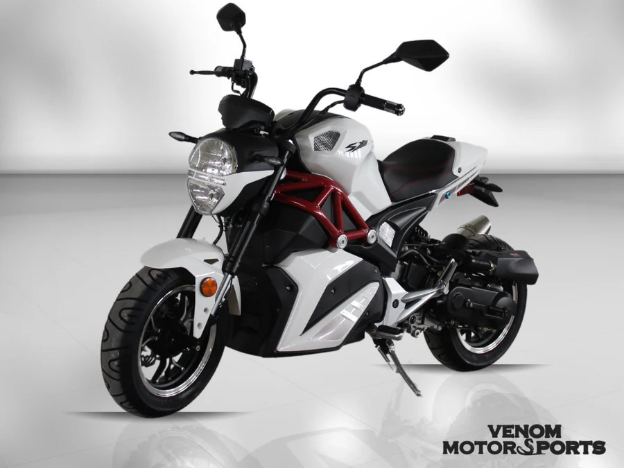
Top Features That Make Gas Powered Mini Bikes for Sale Worth Every Dollar





